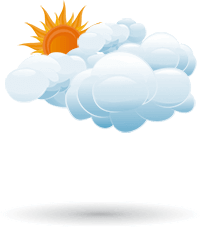One of the first considerations when feeding hay is that it should be based on individual animal requirements. For optimal production, forage quality should be matched as closely as possible to the nutritional needs of the animal. Low quality forage can result in reduced animal performance and increased supplemental feeding costs. Whereas hay of sufficient quality, little or no supplementation will be necessary to meet the animals’ nutritional needs.
Keep in mind that not all forage or hay is created equal. There is great variation between forages and nutrient content can vary dramatically, even within a particular type of forage. Several factors influence hay quality, such as maturity (time of harvesting), forage species & variety, fertilization, temperature, leaf to stem ratio and weather at harvesting/ baling.
Forage with less than 7 percent crude protein (CP) is considered low in quality due to its low protein and low digestibility— less than 50 percent total digestible nutrients (TDN), which is a measure of energy available to the animal. Since forage quality and consumption are positively related, nutrient deficiencies limit forage consumption. Because both consumption and nutrient content of poor-quality forage are low, supplementation often is needed.









